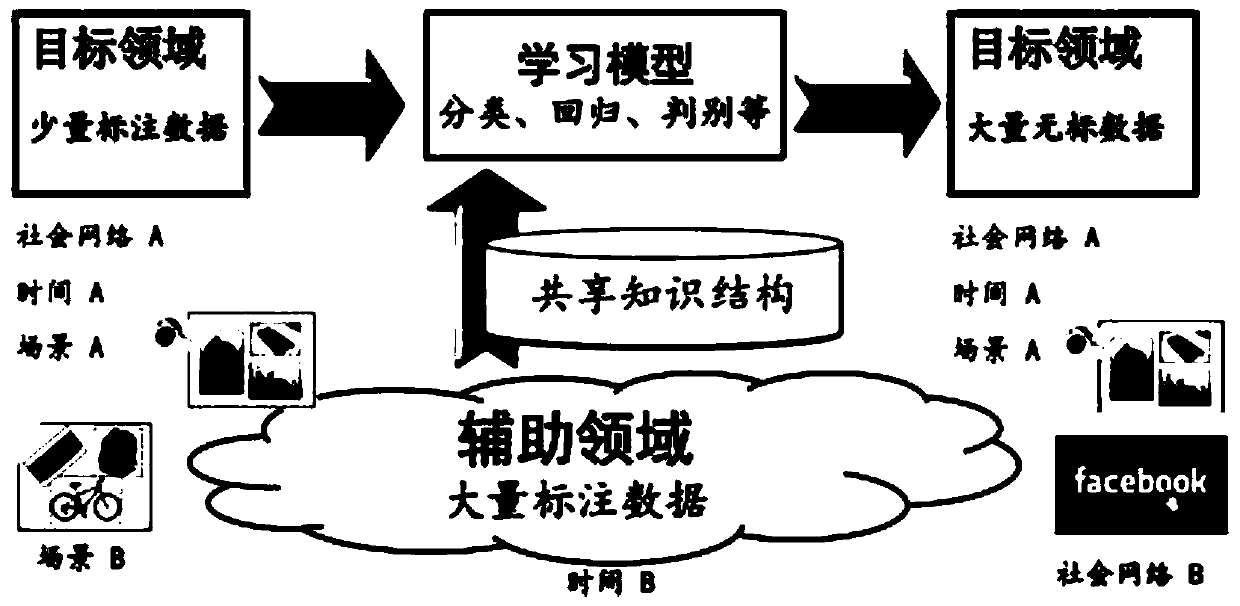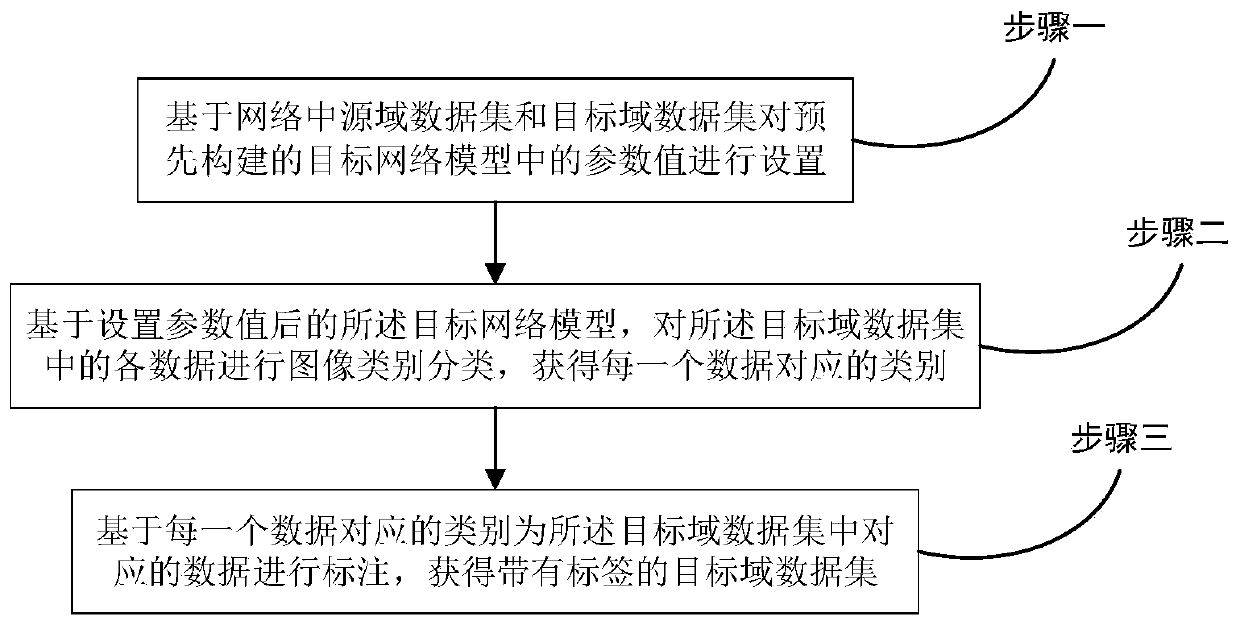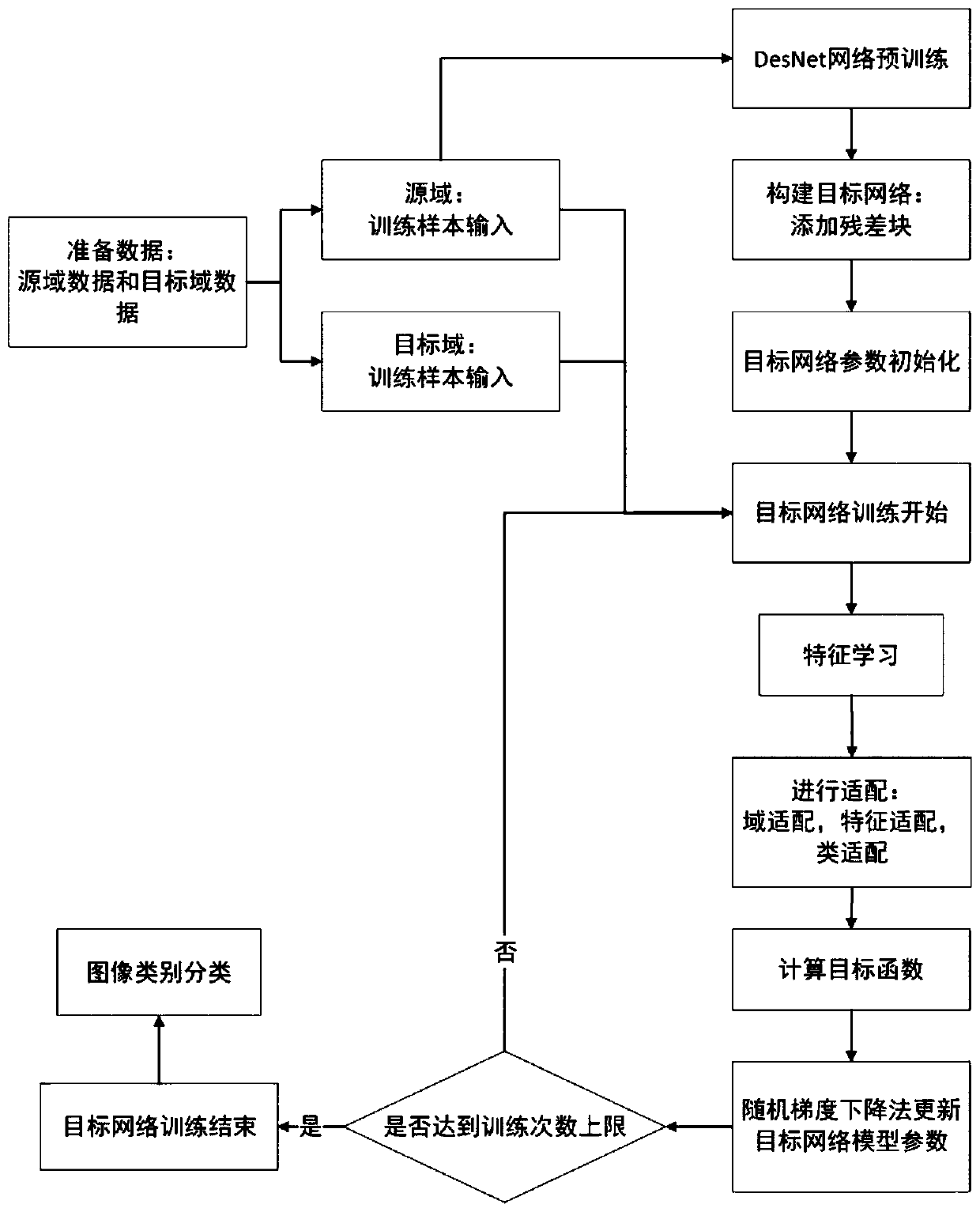Migration method and system based on deep residual error correction network
A residual error correction, network technology, applied in the field of transfer learning, can solve problems such as slow training speed, difficulty in convergence, and upper limit of JAN performance
- Summary
- Abstract
- Description
- Claims
- Application Information
AI Technical Summary
Problems solved by technology
Method used
Image
Examples
Embodiment 1
[0090] According to the analysis of the prior art, the present invention proposes a transfer learning technique based on a deep residual correction network, by inserting a residual correction block (including multiple layers) into the deep network, and using the joint distribution of multiple layers Transfer feature-level and task-level knowledge from the source domain to the target domain.
[0091] Such as figure 2 Shown, the flow process of the present invention's proposed method is:
[0092] Step 1. Set the parameter values in the pre-built target network model based on the source domain data set and the target domain data set in the network;
[0093] Step 2, based on the target network model after setting the parameter value, carry out image category classification to each data in the target domain data set, and obtain the corresponding category of each data;
[0094] Step 3, label the corresponding data in the target domain data set based on the category correspondin...
Embodiment 2
[0162] This embodiment is implemented using python, and the pytorch library is used to build a neural network, experiments are done on the Office-Home dataset, and the results are compared with other unsupervised transfer learning algorithms. Since there are four subsets of domains in the Office-Home dataset, if they are combined in pairs, there are 4*4=16 kinds of cross-domain classification tasks, such as the cross-domain classification operation from the source domain Ar to the target domain Cl, which is denoted as Ar- >Cl, other tasks are similar. Specifically include the following steps:
[0163] Step 1: Construct the training set and test set of samples in the source domain dataset and target domain dataset respectively, add random noise to each sample, and adjust the image size to 256×256 pixels. Then the source domain training data set and the target domain training data set are divided into several mini-batches with a sample size of 32.
[0164] Step 2: Construct th...
Embodiment 3
[0193] Based on the same inventive concept, this embodiment also provides a migration system based on a deep residual correction network, including:
[0194] A setting module is used to set the parameter values in the pre-built target network model based on the source domain data set and the target domain data set in the network;
[0195] Prediction module, for based on the target network model after setting parameter value, carry out image category classification to each data in the target domain data set, obtain the category corresponding to each data;
[0196] The result module is used to label the corresponding data in the target domain data set based on the category corresponding to each data, and obtain the target domain data set with labels;
[0197] Wherein, the target network model is constructed based on a residual correction block and a loss function;
[0198] The source domain data set includes a plurality of pictures and labels corresponding to each picture; th...
PUM
 Login to View More
Login to View More Abstract
Description
Claims
Application Information
 Login to View More
Login to View More - R&D
- Intellectual Property
- Life Sciences
- Materials
- Tech Scout
- Unparalleled Data Quality
- Higher Quality Content
- 60% Fewer Hallucinations
Browse by: Latest US Patents, China's latest patents, Technical Efficacy Thesaurus, Application Domain, Technology Topic, Popular Technical Reports.
© 2025 PatSnap. All rights reserved.Legal|Privacy policy|Modern Slavery Act Transparency Statement|Sitemap|About US| Contact US: help@patsnap.com



